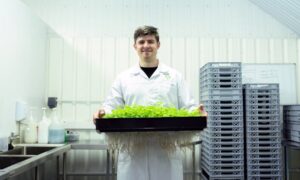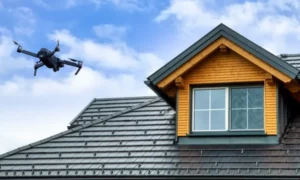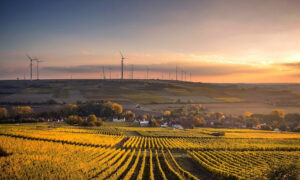The Agriculture Ministry of India has obtained permission from the aviation regulator DGCA to fly drones over rice and wheat fields in 100 districts in order to estimate crop yields at the gram panchayat level under the Pradhan Mantri Fasal Bima Yojana (PMFBY). This is the country’s first large-scale pilot project using remote sensing technology for agricultural production estimation.
Apart from drone-based photos, the large scale pilot project will also utilise high spatial resolution satellite data, biophysical models, smart sampling, and artificial intelligence.
India is the world’s agricultural superpower. Agriculture accounts for around 18% of India’s total GDP (Gross Domestic Product). Lack of access to new agricultural technologies such as drones has proven to be a constraint on the sector’s progress. The approval mentioned above could suggest that drones can now be utilised more extensively for agricultural purposes in India.
Request a Free Sample for Agriculture Drone Market Report
The Agricultural Benefits of Drones
For many years, drones have found a place in private industrial use; their commercial applications continue to expand as quickly as inventors come up with new ideas. Drones have proven to be an indispensable tool for farmers globally, particularly in the agriculture industry. Drone technology is advantageous for a variety of uses, including remote monitoring of tiny areas of crops and entire fields. Drones assist farmers in addressing the agriculture industry’s numerous emerging difficulties. The agriculture drone market is therefore expanding exponentially. According to Reports and Data, the agriculture drone industry size was USD 1.37 billion in 2020 and is expected to register a massive CAGR of 34.5% over 2021-2028.
Contributes To Increased Productivity
One advantage of drones in agriculture is their capacity to meet the expanding demands of the population. Drone technology has aided farmers in overcoming hurdles encountered while inspecting crops in the field. Satellite imaging is the most advanced method of crop monitoring available to date. Nonetheless, this technology has a number of disadvantages, prompting farmers to choose drones instead. Precision is lacking in satellite imagery, as photos are retrieved only once a day, which is insufficient for farmers. Drone technology, on the other hand, can provide a live feed or as many images as necessary, making them significantly more precise and efficient and aiding in precision farming.
Contributes To Pollution Reduction
Precision agriculture practises, which assist farmers in making more informed decisions, have advanced dramatically in recent years. While drones, also known as unmanned aerial vehicles (UAVs), have not yet penetrated the mainstream agriculture space, they are increasingly important in precision farming, assisting agriculture professionals in setting the standard for sustainable farming practises while also protecting and increasing profitability.
Pesticide application to fields can be inconsistent. Drones in agriculture can assist farmers in determining where to spray pesticides evenly, as too much can cause a variety of health problems. There is an option in which drones are equipped with the appropriate equipment that enables them to scan the ground and evenly spray the chemical, hence reducing the amount of chemical needed by agricultural producers.
Cost Savings Associated With Analysis
Drones in agriculture enable farmers to scan large areas in a single trip and deliver significantly more information than satellite imaging. Satellite photography is too expensive, prompting farmers to turn to drones, which are substantially less expensive, faster, and more efficient. Drones are advantageous in agriculture because they enable farmers to monitor their farms precisely.
Precision agricultural practises rely heavily on the use of global positioning system (GPS) technology and geographic information system (GIS) tools, which enable fine-scale monitoring and mapping of yield and crop parameter data within fields. These methods allow for more intensive and efficient cultivation, which can aid farmers in adjusting fertiliser prescriptions and identifying crop illnesses before they spread. Farmers can now make economic and environmental decisions based on more data – for example, by improving fertiliser treatment and applying the correct amount at the right time, significant cost and environmental savings can be realised.
Enhances Employment Prospects
Drone technology also creates several employment prospects for rural residents, ranging from computer engineering professions to drone operators who contribute to the professionalism of agricultural services. Agriculture is the principal source of income for a sizable portion of India’s rural population, and increasing agricultural output increases employment options for them.
Adapts To Changing Climatic Conditions
Farmers are disproportionately impacted by climate change because it presents numerous barriers to their productivity, making it difficult for them to cultivate their crops appropriately. Agriculture producers are looking for innovative techniques to boost their productivity in order to overcome these challenges; this is where drones come in. For example, irrigation is the primary concern farmers have during droughts. Drones equipped with the appropriate sensors can inform farmers about which areas of their fields require additional irrigation.
Climate change continues to add new levels of complexity to the agriculture industry’s efforts to safeguard the supply chain’s security. Rapidly changing environmental circumstances increase these difficulties, and recent estimates indicate that the entire loss to agriculture in Europe as a result of climate change might be as high as 16% by 2050. Indeed, optimising sustainability credentials to minimise adverse effects on public health and the environment will remain a priority, all the more so because enhanced sustainability measures may also result in additional economic benefits by enabling agriculture professionals to focus their resources and efforts more effectively.
Download Report Summary: https://www.reportsanddata.com/download-summary-form/1513
Innovation To Drive Agriculture Drone Market In India
Though drones are beneficial for farmers, the average Indian farmer might find it difficult to afford a drone that is agriculturally efficient. New initiatives are therefore being undertaken to provide farmers with affordable yet proficient drones. For instance, India’s private university, Lovely Professional University, has developed a drone named ‘flying farmer’ that will help majority of Indian farmers to use drone for agriculture-related activities.
This method was designed with the financial constraints of Indian farmers in mind. As a result, the maximum price for this item is Rs. 15,000. This could be a one-time expenditure that assists farmers in increasing agricultural yields.
The ‘Flying Farmer’ is intended to address two critical agricultural concerns that farmers face: pesticide application and weed detection. With rising labor expenses and a labor shortage, it is speculated that drone technology would eventually replace human interaction in pesticide delivery. Pre-programmed drones can deliver pesticides to specified farm areas and crops, preventing chemical wastage and overuse. Second, human weed detection is inefficient and prone to inaccuracy, resulting in diminished yields. Drones equipped with computer vision algorithms and infrared sensors are capable of detecting the precise location and nature of weeds and communicating this information to the farmer in real time. Field trials done at LPU resulted in a 15-20% increase in output quantity



































